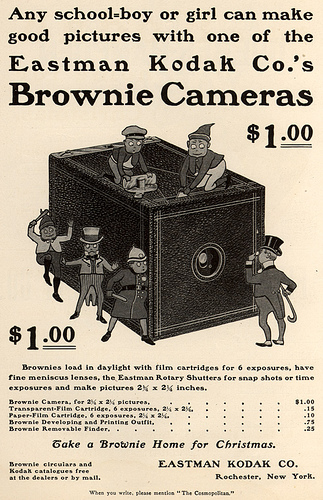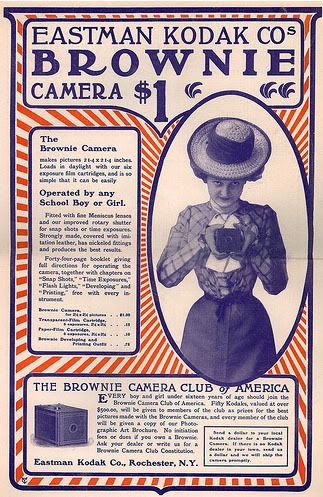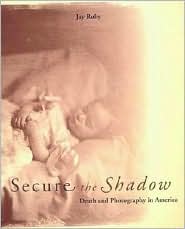I don't have much to say today. I have already spent most of my words. I will leave you with this image taken in November at the Wisconsin Dells.
Thursday, February 25, 2010
Monday, February 22, 2010
Life & Death
This morning I met up with a new friend for tea to discuss some future travel plans. Eventually, we landed on the topic of our current studio practices. While discussing our own work, parallels began to emerge: the fragility of life and cultural numbness towards death. He suggested I check out the artist Bill Viola for a particular video installation: Nantes Triptych. 

"Three large-scale panels of projected video images form a configuration based on the triptych alterpiece. The left panel shows an image of a young woman in the process of giving birth. The right panel shows an image of an old woman in the process of dying. Both are documents of actual events. The central panel shows an image of a clothed man underwater moving through alternate stages of turbulence and undulating stillness, held in fragile suspension before an indistinct, shadowy space, suspended between birth and death."
I have not seen the installation, but I can image having a strong emotional response to the work. Video is something I have always been interested in, but never really experimented with. I highly value the medium in comparison to photography for a few reasons: the sheer volume of footage and the amount of thought/preparation that goes into each scene. I respect actual film more because I think of each frame as a photograph, and sometimes, it takes millions of "photographs" to make one film. One of my professors, Gina Rymarcsuk, suggested I take a film class because I might just love it more than photography. I have yet to do so, but I have been contemplating purchasing my own video camera. I guess if I am going to tackle my studio work from every angle possible, video might have to take precedent one of these days.
Thursday, February 18, 2010
Kodak Brownie camera
In my last post I briefly mentioned Mr. George Eastman and his unforgettable invention: the Kodak Brownie reusable box camera and compatible rolled film. This invention completely revolutionized the photographic industry. 



Consequently, any "school boy or girl" had access to a camera because of the price and service of having someone else load, develop, and print their photographs. Great, right?! Well, there are always two sides to every story. Now, the professional photographers, who had already replaced most of the portrait painters, were competing against the average citizen. Perhaps this was karma, coming back to bite them in their behind for the work they took away from the painters. I am not positive which side I agree with more, but the one thing I do know is that history repeats itself... and once again, photography has been completely revolutionized. This time, it's by the digital world. Again, I am torn as to which is better. Both film and digital have their places. Does it mean I have to decide one? I hope not! If you were being sent to a dessert island and could only use film and a darkroom or digital with computer, scanner, and output, which would you choose?
Monday, February 15, 2010
"Mitigating the finality of death"
Update: Secure the Shadow is fascinating.

Much like portrait paintings, portrait photographs were fairly exclusive to the upper class because of the cost associated with it. This happened to be the same trend with postmortem photographs (for awhile). Plus, unlike today, people really didn't own their own cameras in the mid 1800's {not until the late 1800's/early 1900's did photography get to the masses thanks (or not?) to Mr. George Eastman and his kodak brownie box camera}.
Without access to personal cameras, families did not own "snapshots", which are typically used today as a way to remember someone. When photography became more popular and available to the masses, suddenly the lower middle class were more likely to call upon a photographer to take a photo of a dead family member. I am still investigating why this change happened.. but one thing is for sure, suddenly, around the end of the 19th century, and into the first part of the 20th century, postmortem photography kinda disappeared, or at least, disappeared from advertisement. This might be when people began to think it was creepy or against the wishes of the deceased (or, because cameras started being massed produced, the family could take their own). Now, this is what really fascinates me. Granted, I don't know how I would react if someone called me up to take a photo of their grandmother who recently passed, but why is it so taboo?

(I thought this would lighten the mood)
I've thought about writing a letter to Sally Mann asking her thoughts on the matter because of her work in What Remains, "a five part meditation on mortality".
Further reads (as suggested by Jay Ruby): Wisconsin Death Trip by Michael Lesy and Sleeping Beauty: Memorial Photography in America by Stanley Burns.
Friday, February 5, 2010
Secure the Shadow
I was recently perusing the 770's at Milwaukee's Central Library as research for my job. I have been in search of photography books that will inspire children to think outside of the box. This is not an easy task. I am trying to stay away from portrait books that might encourage kids to take silly photographs of their friends (don't get me wrong, this may be of value in certain situations). I am also trying to stay away from boring landscapes and nudes. Much to my dismay, the majority of the library's selection of photography books were just that and, on top of that, they were all in black and white. At this point, I began to stray from my original mission and browse according to my interests.
 Although I checked out books with photographs by Robert Frank, Francesca Woodman, Sally Mann, and Bill Jacobson, my most prized find was Secure the Shadow by Jay Ruby. Secure the Shadow explores how photography and death became interconnected throughout history. It takes a look at the widely accepted historical practice of photographing the dead.
Although I checked out books with photographs by Robert Frank, Francesca Woodman, Sally Mann, and Bill Jacobson, my most prized find was Secure the Shadow by Jay Ruby. Secure the Shadow explores how photography and death became interconnected throughout history. It takes a look at the widely accepted historical practice of photographing the dead.
Although my interests lie more within the realm of how photography captures death while attempting to preserve life, I definitely could have used this a year ago when I was in the midst of my thesis work!
 Although I checked out books with photographs by Robert Frank, Francesca Woodman, Sally Mann, and Bill Jacobson, my most prized find was Secure the Shadow by Jay Ruby. Secure the Shadow explores how photography and death became interconnected throughout history. It takes a look at the widely accepted historical practice of photographing the dead.
Although I checked out books with photographs by Robert Frank, Francesca Woodman, Sally Mann, and Bill Jacobson, my most prized find was Secure the Shadow by Jay Ruby. Secure the Shadow explores how photography and death became interconnected throughout history. It takes a look at the widely accepted historical practice of photographing the dead.Although my interests lie more within the realm of how photography captures death while attempting to preserve life, I definitely could have used this a year ago when I was in the midst of my thesis work!
Subscribe to:
Posts (Atom)
